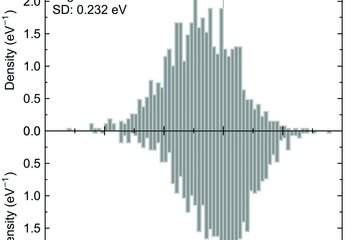Local lattice distortion and strength of VCoNi complex concentrated alloys

Schematic of the local lattice distortion of CCAs.
Local lattice distortion, i.e., deviations of atomic positions from the ideal ones, is one of the core effects in complex concentrated alloys (CCAs) and high entropy alloys (HEAs). It has been expected that the strength of HEAs and CCAs can be improved by inducing larger local lattice distortions. While typical CCAs and HEAs, namely, CrMnFeCoNi and CrCoNi, show notable strength and ductility, particularly at cryogenic temperatures, they do not substantially exceed those of conventional alloys. To overcome this limit, it may be essential to further introduce the local lattice distortion.
We therefore consider to replacing Cr in CrCoNi to a 4d-transition element, V, which is intuitively expected to have a larger volume than Cr. To evaluate the local lattice distortions quantitatively, we conduct first-principles calculations based on supercell models. We found that the atomic volumes in VCoNi is much more deviated from those in the fcc phases of their chemical components than CrCoNi. This indicates larger local stress in VCoNi than in CrCoNi, which can be a driving force for the solid solution strengthening. We also found that the bond distance distributions become larger in VCoNi than CrCoNi, indicating larger local lattice distortions in VCoNi. The mean atomic displacement, which is known to be correlated with the yield strength normalized by the share modulus [1], is also found to be larger for VCoNi than other typical 3d-transition-element based CCAs. In experiments, we indeed demonstrate that VCoNi shows much better strengths than CrCoNi; in combination with grain refinement, the yield strength reaches nearly 1 GPa. We are extending our approaches to find CCAs with further better strength.
References
[1] N. L. Okamoto, K. Yuge, K. Tanaka, H. Inui, and E. P. George, AIP Adv. 6, 125008 (2016).












